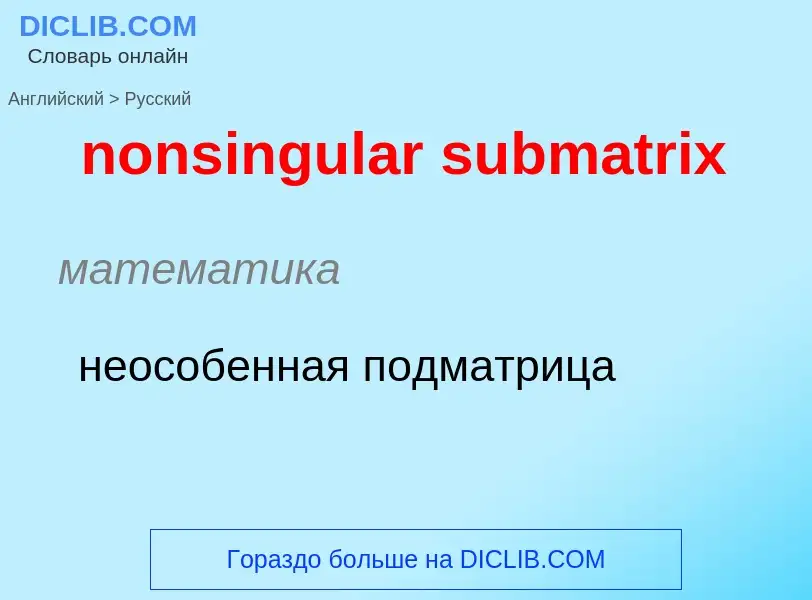Перевод и анализ слов искусственным интеллектом ChatGPT
На этой странице Вы можете получить подробный анализ слова или словосочетания, произведенный с помощью лучшей на сегодняшний день технологии искусственного интеллекта:
- как употребляется слово
- частота употребления
- используется оно чаще в устной или письменной речи
- варианты перевода слова
- примеры употребления (несколько фраз с переводом)
- этимология
nonsingular submatrix - перевод на русский
математика
неособенная подматрица
общая лексика
особое решение
математика
неособенное кольцо
математика
невырожденный модуль
математика
сингулярный подмодуль
математика
сингулярный идеал
математика
вырожденный модуль
математика
матричная операция
операция над матрицами
общая лексика
подматрица
субматрица
математика
блок матрицы
Смотрите также
Определение
Википедия
A singular solution ys(x) of an ordinary differential equation is a solution that is singular or one for which the initial value problem (also called the Cauchy problem by some authors) fails to have a unique solution at some point on the solution. The set on which a solution is singular may be as small as a single point or as large as the full real line. Solutions which are singular in the sense that the initial value problem fails to have a unique solution need not be singular functions.
In some cases, the term singular solution is used to mean a solution at which there is a failure of uniqueness to the initial value problem at every point on the curve. A singular solution in this stronger sense is often given as tangent to every solution from a family of solutions. By tangent we mean that there is a point x where ys(x) = yc(x) and y's(x) = y'c(x) where yc is a solution in a family of solutions parameterized by c. This means that the singular solution is the envelope of the family of solutions.
Usually, singular solutions appear in differential equations when there is a need to divide in a term that might be equal to zero. Therefore, when one is solving a differential equation and using division one must check what happens if the term is equal to zero, and whether it leads to a singular solution. The Picard–Lindelöf theorem, which gives sufficient conditions for unique solutions to exist, can be used to rule out the existence of singular solutions. Other theorems, such as the Peano existence theorem, give sufficient conditions for solutions to exist without necessarily being unique, which can allow for the existence of singular solutions.


